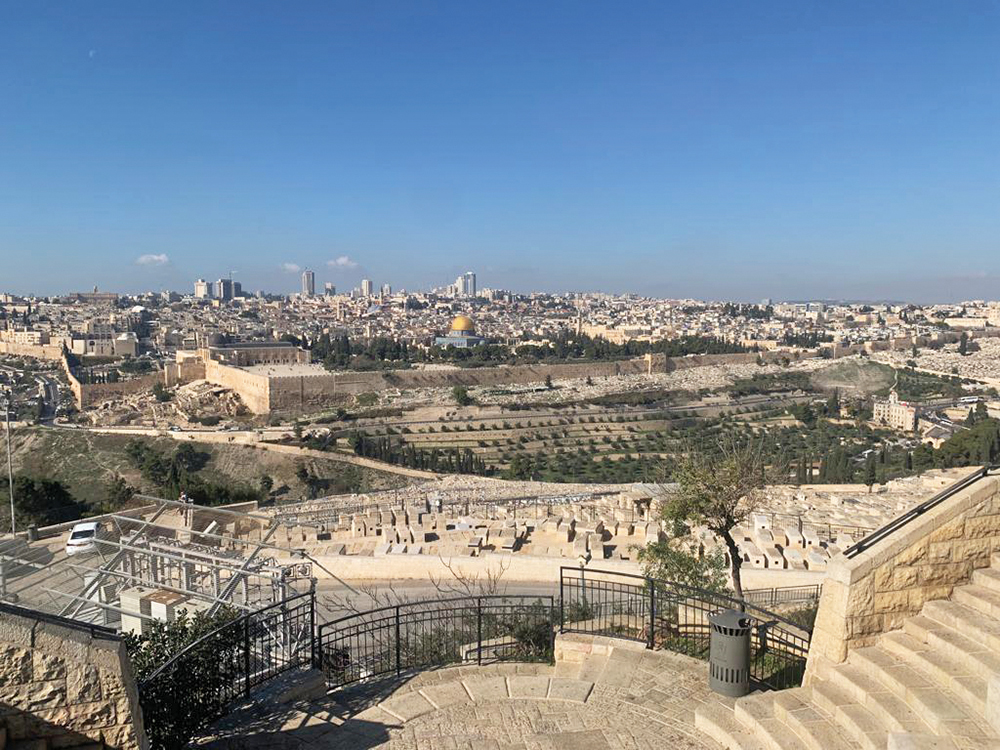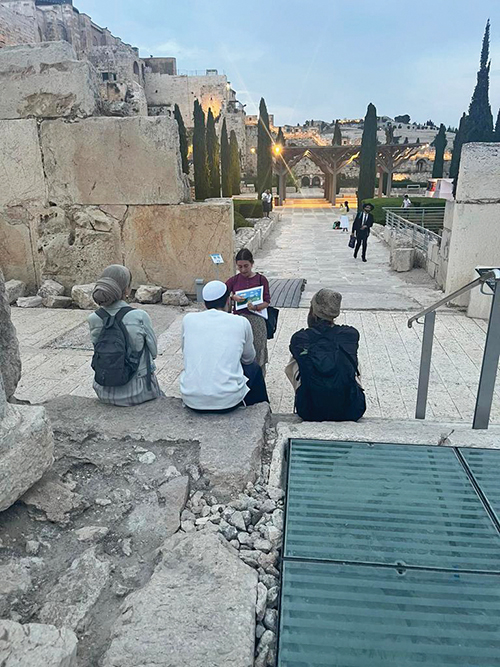
Israel needs tourists right now. The economy needs a boost. I would know — I’m a tour guide in the Old City of Jerusalem.
I grew up in Bergenfield and made aliyah during my shana ba’aretz. This past summer, I took a nine-week course to become an official Israeli tour guide, and I now guide in the Old City for my Sherut Leumi (national service). My course ended as the Yomim Noraim began, which meant that I began giving tours during the busiest weeks of the year. It was incredible — seeing people I know in every alley, accidentally giving tours to old neighbors from New Jersey because they happened to have signed up during my time slot. The Old City was packed with every kind of Jew from every walk of life.
And then Oct. 7 hit and everything changed. For the past two months, the Old City has been desolate. Throngs of crowds have been replaced with the loudest silence that I have ever heard. For many weeks, foreign languages have not been heard across the squares, the restaurants have had no lines, and almost no one has been at the Kotel. Seeing the holiest, most important city in the world abandoned like this has been heartbreaking.
But the Old City is not alone in its desolation — tourism throughout the country has come to an almost complete stop because of the war. Israel’s tourism and restaurant industries usually bring in many billions of dollars a year. The Israeli economy needs tourists.
I know that coming to Israel to go on tours right now sounds ridiculous. There is a war, after all. But now more than ever, knowing our nation’s history is vital in understanding where we are coming from and where we are going. As you walk through Israel, you come across a 3,500-year-old story of perseverance, strength and conviction. You see destruction and how we rebuilt and continue to rebuild. Learning about it from afar is important. But visiting in person and having a guide who makes the stories come alive for you and your children is an entirely different experience and one worth having — especially now.
I was given this experience during my tour guiding course a few months ago. Though I had been taught about the miracle of Israel from a very young age, I did not yet fully understand what 2,000 years of yearning, of praying every day meant.

While walking through Har Ha’Zeitim, overlooking the Old City, the presenter described in vivid detail how my ancestors had visited Israel for generations, trying to get as close to Har Habayit as possible. But they were prevented from getting all the way there because of the rulers of the times. Still, they made the journey, and cried for the rebuilding of the Beit Hamikdash as they stood on Har Ha’Zeitim, exactly where I was standing, and gazed at Har Habayit, where the Beit Hamikdash once stood. As I listened to her talk, I began to feel their tears in every tree I passed, in every rock I stepped on. And I haven’t stopped feeling them. I now connect with my ancestors in a way that I never had before.
With this new understanding, I look at so many facets of my life differently. When I daven Shmoneh Esrei, and say the tefilot about Yerushalayim and the geula, I no longer think just about the rebuilding of the Beit Hamikdash itself. I now understand the physical reality that for 2,000 years, Jerusalem was either desolate or filled with people who hated us; when my ancestors said these tefilot they were begging Hashem to rebuild a city in ruin. I say the same words as my ancestors, but as I walk through a built-up Yerushalayim full of Jewish life, my words take on a very different meaning.
I now get to ignite this spark in the people that I give tours to — I help them connect to our land, our Torah and our history. I love showing my Old City tour groups the Chomah Harichava (Broad Wall), which was built by King Hezkiyahu in an epic scramble to save the First Beit Hamikdash from destruction, described in Nach and still standing today. (We are renovating the visitors’ center now, and it will soon be an even more incredible, interactive experience). I also love the Hurva Synagogue, whose many layers catalog the complex 3,000-year-old history of Jews in what is now the Jewish Quarter, one time period at a time.
I show pain on my tours as well: the destruction of the Second Beit Hamikdash in the Davidson Archeological Garden, and the persecution of the generations to follow in the Cardo and in the Western Wall Brigade headquarters. But the pain is somewhat mitigated by the fact that though the Romans and other empires thought that they had defeated us for good, wiping Jews off the face of the earth, they are the ones in the history books and we are the ones who continue to live in and visit Jerusalem. That is the story of the Jews, etched into every stone in this country; the ups and downs, the defeat and the refusal to give up.
I invite you and your family to come learn about our incredible history firsthand in Israel over the next few months. Whether you find yourselves in the Old City or anywhere else in the country, come to Israel and learn about what history left behind for us to see, touch and walk amidst, and what it teaches us for our future — that we will never be broken.
And maybe go out to eat or visit other tourist attractions as well. Israel needs you!
Meira Shapiro grew up in Bergenfield. She went to Maayanot for high school and made aliyah in 2022 during her shana alef in Migdal Oz. She now does Sherut Leumi (national service) as a tour guide in the Jewish Quarter under the Travel Rova tourism department.









